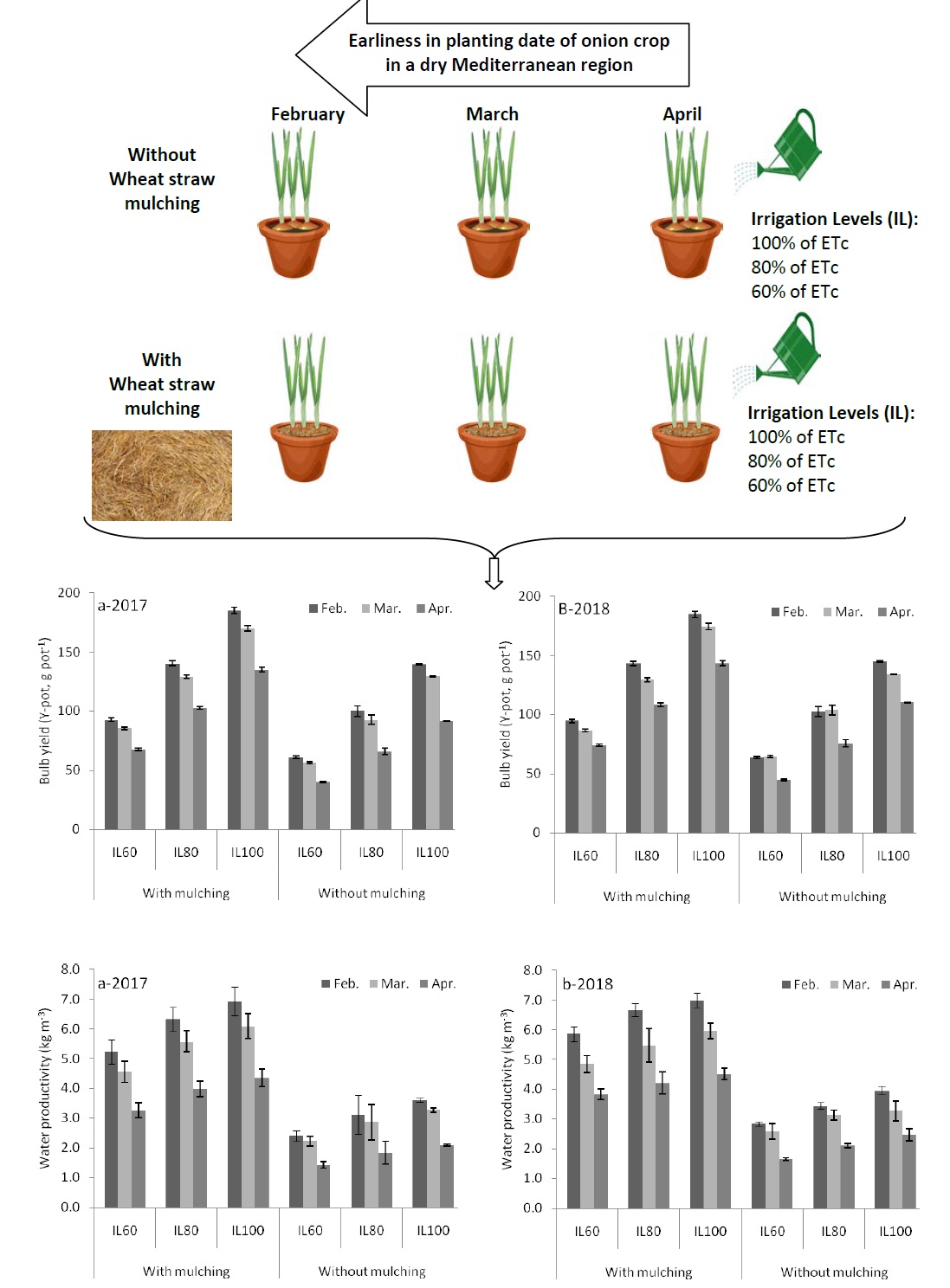Improving water productivity and yield of onion crop by combining early planting and straw mulch under different irrigation levels in dry Mediterranea region

Published 2020-04-01
Keywords
- Allium cepa L.,
- irrigation water use efficiency,
- onion bulb yield
How to Cite
Abstract
In response to the Sustainable Development Goals (SDGs) adopted by United Nations, combining using straw mulching, the proper crop planting date, and regulated deficit irrigation (RDI) is fundamental to adapt to climate change and to promote sustainable agriculture in the dry Mediterranean region. Two-year pot experiment under field conditions (2017 and 2018) was conducted in Damascus Countryside, Syria (altitude 600 m), to evaluate the onion crop response to early planting, irrigation level, and straw mulching. Treatments composed of three different planting dates with 28-day intervals (two early dates in February and March, and the traditional date in April), three irrigation levels (100, 80, and 60% of crop evapotranspiration, ETc), and two types of soil cover (with and without wheat straw mulch), with three replicates. Findings revealed that the seasonal ETc decreased from about 900 mm under current practice (planting in April without mulch) to only about 550 mm under both straw mulch and earliness in planting. Large bulb yield increases (more than double) were also obtained. Moreover, early planting using straw mulching significantly enhanced the onion crop response to RDI, even at 60% of ETc. Combining early planting in February, straw mulching, and full irrigation represents the best agricultural management.





